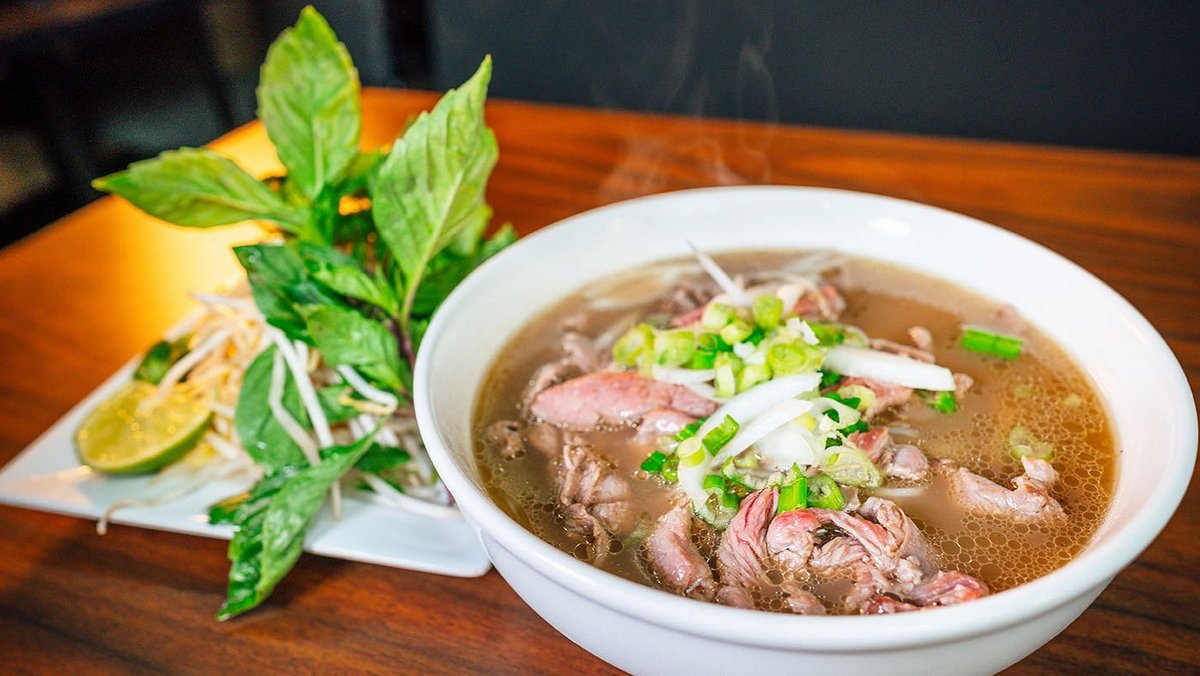Explore the following article to delve deeper into the origins and how Pho Vietnam transcends the global culinary scene. When it comes to Vietnamese cuisine, Pho Vietnamese noodle soup is undoubtedly the first name that comes to mind. Widely popular in the world, pho receives praise for its deliciousness. Though not a rare dish, the taste of pho always brings a delightful and comforting feeling to any diner. It truly represents the perfect dish for the palate and senses of the Vietnamese people.
The History and Origins of Pho Vietnam
Pho, often considered Vietnam’s national dish, has a mysterious origin, with experts and enthusiasts pointing to its emergence in the early 20th century, primarily in the northern regions. Some theories suggest its first appearance in Nam Dinh province, influenced by the local demand created by both Vietnamese and French residents. Ingredients from the region, combined with a touch of beef, resulted in a soup that retained local flavors but incorporated foreign tastes. Another hypothesis places the first pho bowl in Van Cu, a humble village in Nam Dinh, with locals later venturing to Hanoi to sell their creations. Though unverifiable, these speculations underline the pivotal role of Van Cu villagers in early pho sales in Hanoi.
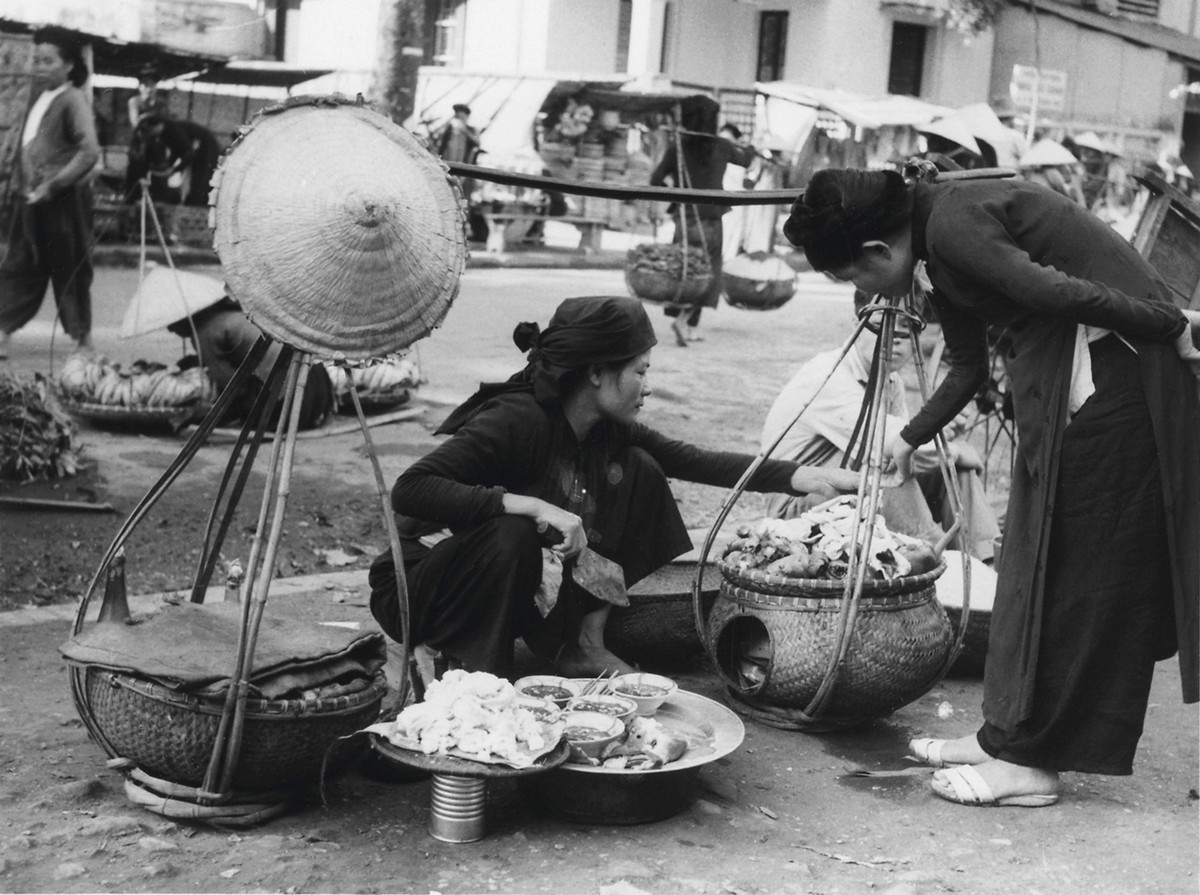
Traditionally, dishes combining noodles, broth, and meat in a single bowl reflect Chinese and French culinary influences. Vietnam’s cultural ties with China are undeniable, and the preference for rare meat among the French may explain the inclusion of beef (later chicken) in pho. Some even suggest a link between pho and the French “pot-au-feu,” noting similarities in cooking processes like using beef bones for broth, simmering time, and the addition of spices. Nevertheless, Vietnamese chefs have innovated, refining pho into the beloved dish it is today. Regardless of its Chinese or French origins, under local culinary influences, pho has evolved into a uniquely Vietnamese, perfect delicacy.
The Flavors and Ingredients of Pho
To enjoy the best pho Vietnam, the excellence of a pho bowl heavily depends on the culinary skills of the chef, especially the preparation of the ingredients, making each bowl a culinary masterpiece.
The Ingredients of Pho
Pho Vietnam primarily consists of rice noodles and a flavorful broth, accompanied by thinly sliced beef or chicken. The preferred beef for pho is usually brisket, tendon, and tripe sourced from native cattle breeds. Additional spices such as hoisin sauce, pepper, lime, fish sauce, and chili are added according to individual taste preferences.
The broth is a crucial element, simmered from beef or pork bones with spices like cinnamon, star anise, charred ginger, coriander seeds, cardamom, cloves, roasted shallots, and dried squid. Chicken pho employs a similar broth-making process. Traditional “bánh phở” is crafted from rice flour, forming thin, flat strands.
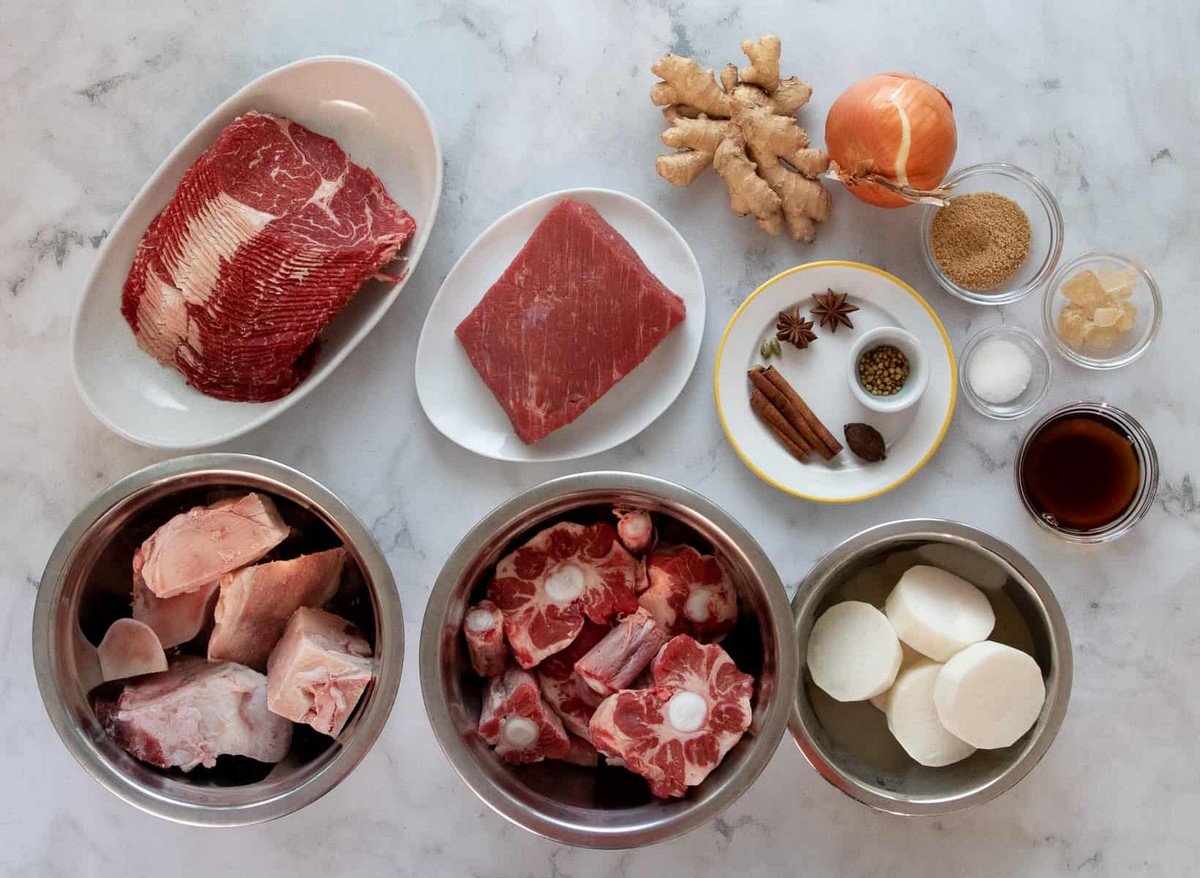
Variations of Pho
Pho Vietnam comes in various enticing variations, offering a culinary journey through different flavors and ingredients.
- Pho Bo (Vietnamese Beef Pho): This classic version features thinly sliced beef, tender beef brisket, or beef meatballs, harmonizing with the rich and aromatic broth.
- Pho Ga (Vietnamese Chicken Pho): Embracing a lighter profile, chicken pho introduces succulent poached or shredded chicken, creating a delightful alternative.
- Vegetarian Pho: Catering to diverse preferences, vegetarian pho combines a hearty vegetable broth with an array of tofu, mushrooms, and fresh vegetables for a wholesome experience.
These diverse renditions showcase the adaptability of pho, ensuring there’s a delightful bowl for everyone, regardless of dietary preferences or taste preferences. Whether savoring the robustness of beef, the subtlety of chicken, or the freshness of vegetables, each variation adds its unique charm to Vietnamese cuisine.
The Art of Making Pho
Crafting the perfect bowl of pho involves a meticulous process, centered on the flavorful broth and its presentation with essential elements. Let’s explore Vietnamese Pho recipe with Asia Legend Travel right now!
Preparing the Broth
The heart of pho lies in simmering beef bones and spices, thoroughly cleaning the bones and discarding the first boil to eliminate odors. The second boil yields a savory broth with added ginger and charred onions. Adjusting the heat maintains a rolling boil, skimming impurities until the broth is clear. Gia vi, featuring star anise, cloves, cinnamon, cardamom, coriander seeds, dried squid, and traditionally, a piece of oxtail, infuses the broth with its aromatic richness.
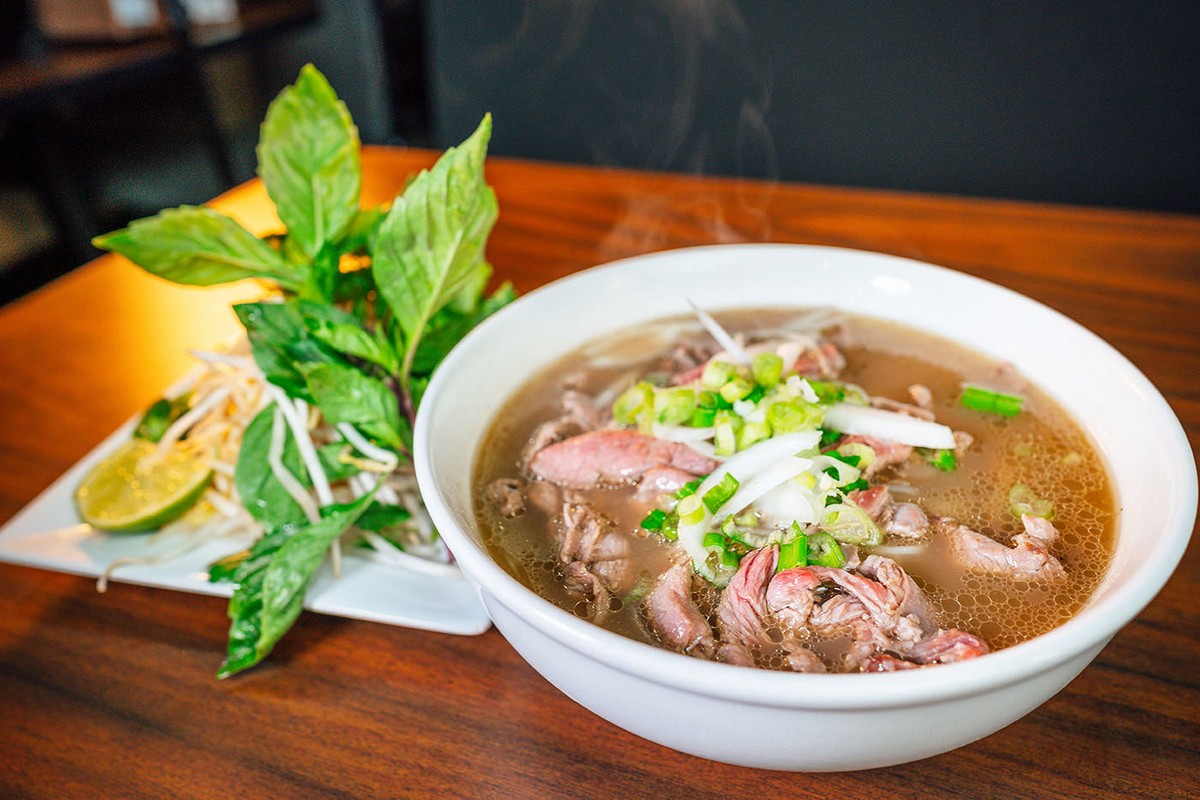
Presentation
Dipping rice noodles in boiling water and placing them in a bowl precedes artfully arranging thinly sliced beef or chicken on top. Fresh herbs like scallions, cilantro, and basil add vibrant colors and fragrances. The meticulously prepared broth is poured over, enveloping noodles and meat evenly, enhancing the visual and culinary appeal. This artistry elevates pho beyond a dish; it becomes a sensory experience, embodying the essence of Vietnamese cuisine.
>> What does Pho taste like? Explore the flavors of authentic Pho Vietnam!!
Pho in Vietnamese People’s Life
Pho holds a cherished place in the daily lives of the Vietnamese people.
How to Eat Pho
At Vietnamese pho restaurants, the tradition is for customers to choose their desired types of pho, such as beef or chicken. The flavorful broth and accompanying rice noodles are served in a bowl. Tables are numbered, each equipped with chopsticks, a spoon, and condiments like hoisin sauce, lime, fish sauce, and chili. Diners personalize their pho by adding these condiments according to their taste preferences, creating a delightful and personalized dining experience.
Pho Hanoi & Pho Saigon
Pho Vietnam exhibits diverse variations influenced by regional nuances. The two prominent styles are Pho Bac from the North and Pho Saigon from the South, each distinct in taste and presentation.
In Hanoi, Pho is a revered specialty enjoyed throughout the day, making it easy to find Hanoi Pho restaurants everywhere. The broth, meticulously crafted from beef bones—marrow, knuckle, and brisket—infuses a salty richness. The thin and tender rice noodles are complemented by an array of fresh herbs, black pepper, chili vinegar, and lime. All of these elements come together to create the best Pho in Hanoi. Pho emerged in Hanoi during the French colonial era, initially as “pho ganh,” street vendors with mobile setups.

Pho migrated to Saigon in the 1950s, bringing a distinct southern flair. The beef options—well-cooked, rare, brisket, tendon, and tripe—offer a variety unseen in the North. The broth, often without added MSG, carries a clearer appearance, occasionally sweeter and richer, simmered with chicken bones, dried squid, and roasted ginger. Unlike Hanoi, Saigonese rarely pair pho with quay (fried dough), showcasing regional disparities in culinary preferences.
The Benefits of Pho
Pho Vietnam, a rich blend of 18-20 natural ingredients, offers a distinct and easily digestible experience. The broth, crucial in pho, extracts calcium for joint care and includes flavors from dried ingredients, acting as a mineral and vitamin source. Beef, rich in amino acids and vitamins, supports muscular development, and fresh vegetables regulate cholesterol. Pho Vietnam’s fresh rice noodles add significant nutrition per serving.
Pho Around the World
The famous Pho Vietnamese food has transcended borders thanks to the Vietnamese diaspora. Communities in the West, such as the USA, France, Australia, and Canada, host numerous pho restaurants. Vietnamese immigrants also introduced pho to Eastern European nations like Russia, Poland, and the Czech Republic.
In the USA, especially in California’s Little Saigon, pho gained popularity. From longstanding spots like Pho 54 to newer establishments, the diversity of Vietnamese pho is showcased.
Americans, not just Vietnamese, have embraced pho, with chef Didi Emmons opening the first pho restaurant in Cambridge, Massachusetts, in 1990. Unofficial 2005 statistics estimated annual revenues of Vietnamese pho establishments in the US at about $500 million.
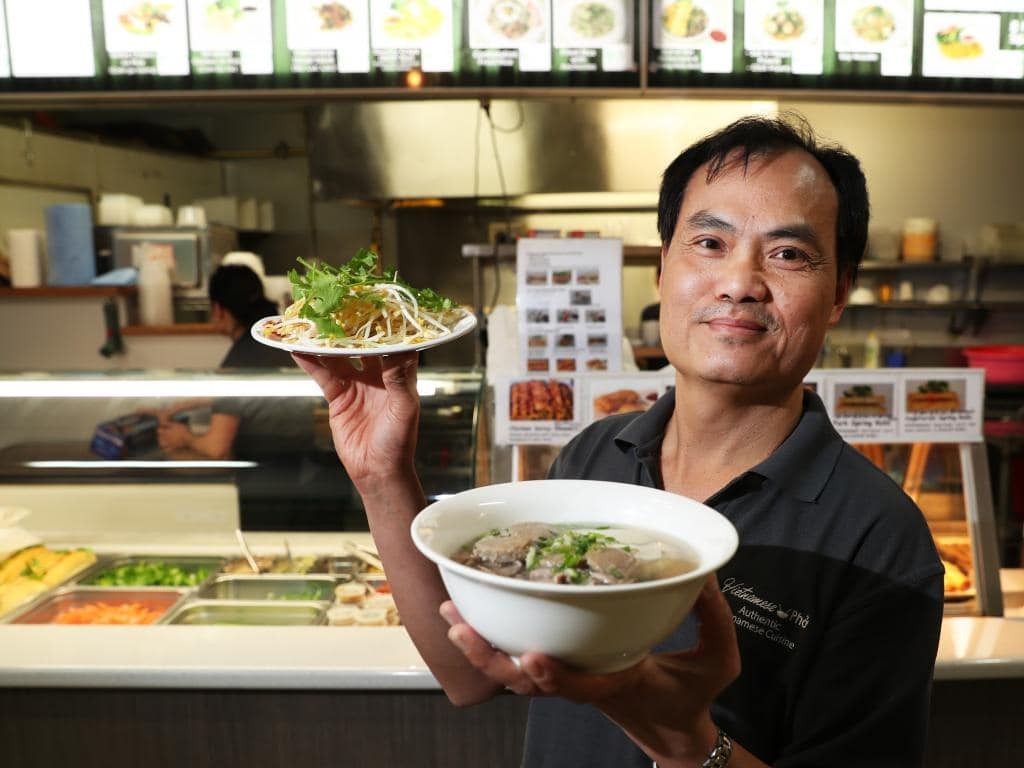
Globally, Pho Thin Lo Duc, originating in Hanoi, expanded to Tokyo, Japan, and Melbourne, Australia, in 2019. Additionally, Pho 24, the first Vietnamese brand to franchise pho, established over 20 shops worldwide, primarily in the Asia-Pacific region from 2003 to 2011, reaching cities like Seoul, Hong Kong, London, and Melbourne.
Pho Vietnam is considered the epitome of Vietnamese cuisine, capturing the hearts and taste buds of people around the world. With its widespread popularity and unmatched flavor, Pho Vietnamese dish has become a symbol of comfort and deliciousness. This iconic dish, celebrated for its essence and cultural significance, remains an integral part of Vietnam’s culinary identity.
